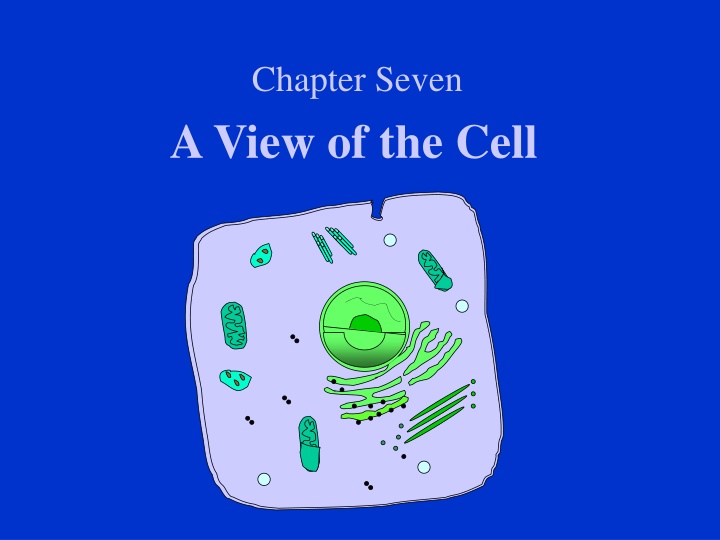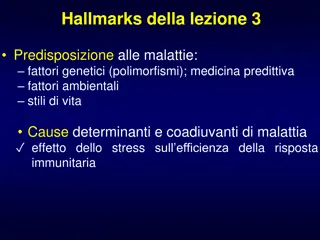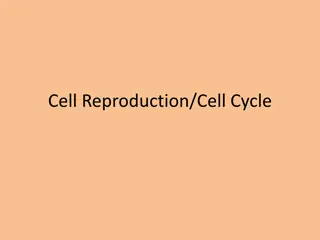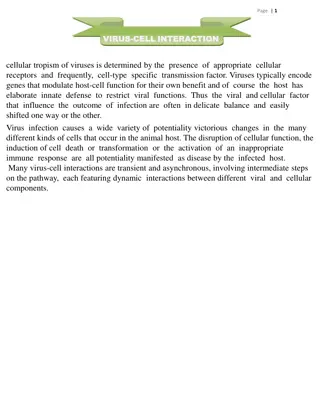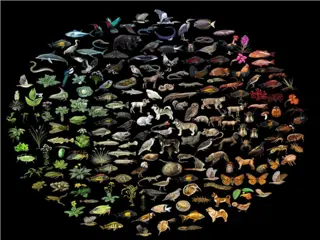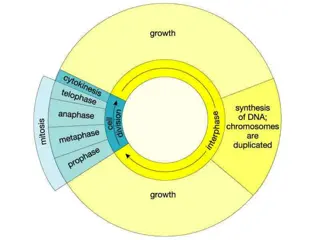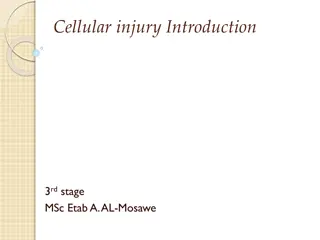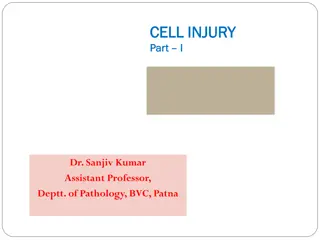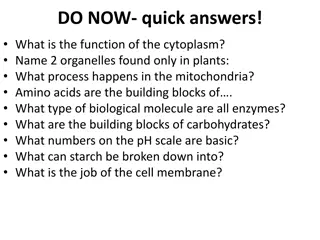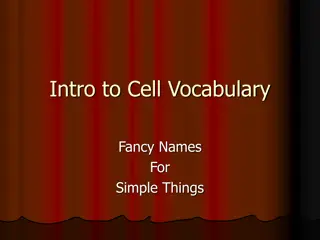A View of the Cell - Cellular Organization and History
Uncover the cellular organization, history, and types of cells with a deep dive into the world of microscopy and the fundamental Cell Theory. Explore the evolution of understanding cells from their basic unit to complex organisms.
Download Presentation

Please find below an Image/Link to download the presentation.
The content on the website is provided AS IS for your information and personal use only. It may not be sold, licensed, or shared on other websites without obtaining consent from the author.If you encounter any issues during the download, it is possible that the publisher has removed the file from their server.
You are allowed to download the files provided on this website for personal or commercial use, subject to the condition that they are used lawfully. All files are the property of their respective owners.
The content on the website is provided AS IS for your information and personal use only. It may not be sold, licensed, or shared on other websites without obtaining consent from the author.
E N D
Presentation Transcript
Chapter Seven A View of the Cell
Cellular Organization Cell Tissue group of cells functioning together. Organ group of tissues functioning together. Organ System group of organs functioning together. Organism group of organ systems functioning together.
The History of the Cell The Cell The basic unit of an organism Discovery made possible by the invention of the microscope
Microscopes and Cells 1600 s. Anton van Leeuwenhoek first described living cells as seen through a simple microscope.
Microscopes and Cells Robert Hooke used the first compound microscope to view thinly sliced cork cells. Compound scopes use a series of lenses to magnify in steps. Hooke was the first to use the term cell .
Microscopes and Cells 1830 s. Mathias Schleiden identified the first plant cells and concluded that all plants made of cells. - Thomas Schwann made the same conclusion about animal cells.
Cell Theory: All organisms are made up of one or more cells. The cell is the basic unit of organization of all organisms. All cells come from other cells all ready in existence.
Two Basic Cell Types 1) Prokaryote Lacks internal compartments. No true nucleus. Most are single-celled (unicellular) organisms. Examples: bacteria
Two Basic Cell Types 2) Eukaryote Has several internal structures (organelles). True nucleus. Either unicellular or multicellular. unicellular example: yeast multicellular examples: plants and animals
The Parts of The Eukaryotic Cell 1) Boundaries A)Plasma Membrane -- Serves as a boundary between the cell and its external environment. -- Allows materials to pass in and out of the cell.
1) Boundaries B) Cell Wall -- Surrounds the plasma membrane of the cells of plants, bacteria, and fungi. -- Plant cell walls contain cellulose while fungi cell walls contain chitin.
The Parts of The Eukaryotic Cell: 2) Controls A) Nucleus Regulates cell function. Surrounded by a double- layered membrane (nuclear enveloped) with large pores that allow materials to pass in and out of the nucleus. Contains chromatin long tangles of DNA.
2) Controls B) Nucleolus Found in the nucleus and responsible for ribosome production. Ribosomes are the sites of protein production.
The Parts of The Eukaryotic Cell: 3) Assembly Cytoplasm The jelly-like material that surrounds the organelles.
The Parts of The Eukaryotic Cell: 4)Transport A) Endoplasmic reticulum Folded membrane that acts as the cell s delivery system. Smooth E.R. contains enzymes for lipid synthesis. Rough E.R. is studded with ribosomes for protein synthesis.
4)Transport B)Golgi apparatus (or Golgi body) A series of flattened sacs where newly made lipids and proteins from the E.R. are repackaged and shipped to the plasma membrane.
The Parts of The Eukaryotic Cell: 5) Storage A) Vacuoles A sac of fluid surrounded by a membrane used to store food, fluid, or waste products.
5) Storage B) Lysosomes Contain a digestive enzyme. Can fuse with vacuoles to digest food, or can digest worn cell parts. Also known as suicide sacs because they can also destroy the whole cell.
The Parts of The Eukaryotic Cell: 6) Energy Transformers Mitochondria Produce the energy for the cell. Also known as the powerhouse of the cell . Has a highly folded inner membrane (cristae).
6) Energy Transformers B) Chloroplasts -- Found in plant cells and some protists. -- Transforms light energy into chemical energy which is stored in food molecules. -- Contain chlorophyll a green pigment that traps light energy and gives plants their green color.
The Parts of The Eukaryotic Cell: 7) Support Cytoskeleton A network of thin, fibrous materials that act as a scaffold and support the organelles. Microtubules hollow filaments of protein. Microfilaments solid filaments of protein.
The Parts of The Eukaryotic Cell: 8) Locomotion 1) Cilia Short, numerous, hair-like projections from the plasma membrane. Move with a coordinated beating action.
8) Locomotion B) Flagella Longer, less numerous projections from the plasma membrane. Move with a whiplike action.
The Parts of The Eukaryotic Cell: 9) Cell Division Centrioles made of protein. play a role in the splitting of the cell into two cells. found in animal and fungi cells.
Flagella nucleolus Nucleus Chromosomes Ribosomes Endoplasic reticulum Microtuble Mitochondrion Golgi apparatus Centrioles Cillia Composite Animal Cell
This powerpoint was kindly donated to www.worldofteaching.com http://www.worldofteaching.com is home to over a thousand powerpoints submitted by teachers. This is a completely free site and requires no registration. Please visit and I hope it will help in your teaching.
